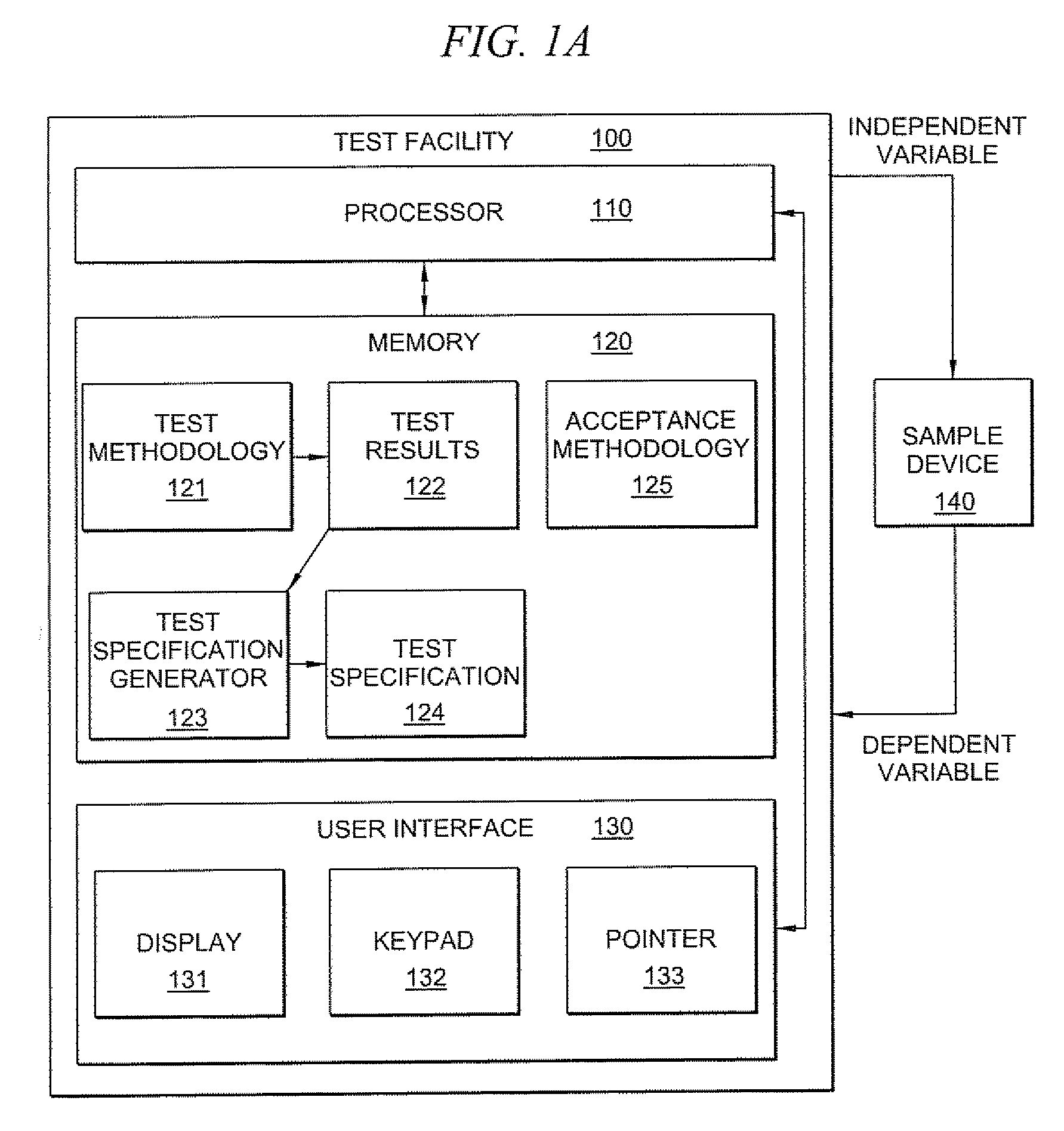Generation of test specifications based on measured data points
a technology of measurement data points and test specifications, applied in the direction of measurement devices, measurement arrangements for variables, instruments, etc., can solve the problems of reducing the utilization rate of memory and processing resources, reducing or minimizing the use of resources in implementation, and reducing or minimizing the use of resources
- Summary
- Abstract
- Description
- Claims
- Application Information
AI Technical Summary
Benefits of technology
Problems solved by technology
Method used
Image
Examples
Embodiment Construction
[0023]FIGS. 1A and 1B show an instrument or test facility adapted according to an embodiment of the present invention. Test facility 100 of the illustrated embodiment, such as may comprise any number of instruments and instrument configurations (e.g., a spectrum analyzer, an oscilloscope, a network analyzer, and / or the like), includes processor 110, memory 120, and user interface 130. Of course, test facility 100 may include additional functional blocks, such as test signal generation, test response capture, peripheral input / output, report generation, diagnostics, etc. However, to simplify the discussion of test facility 100 in order to facilitate the understanding of the present invention, such additional functional blocks have been omitted from the illustrated embodiment. It should be appreciated that the foregoing functional blocks, as well as additional or alternative functional blocks, my be incorporated in a test facility adapted according to embodiments of the invention. More...
PUM
 Login to View More
Login to View More Abstract
Description
Claims
Application Information
 Login to View More
Login to View More - R&D
- Intellectual Property
- Life Sciences
- Materials
- Tech Scout
- Unparalleled Data Quality
- Higher Quality Content
- 60% Fewer Hallucinations
Browse by: Latest US Patents, China's latest patents, Technical Efficacy Thesaurus, Application Domain, Technology Topic, Popular Technical Reports.
© 2025 PatSnap. All rights reserved.Legal|Privacy policy|Modern Slavery Act Transparency Statement|Sitemap|About US| Contact US: help@patsnap.com



